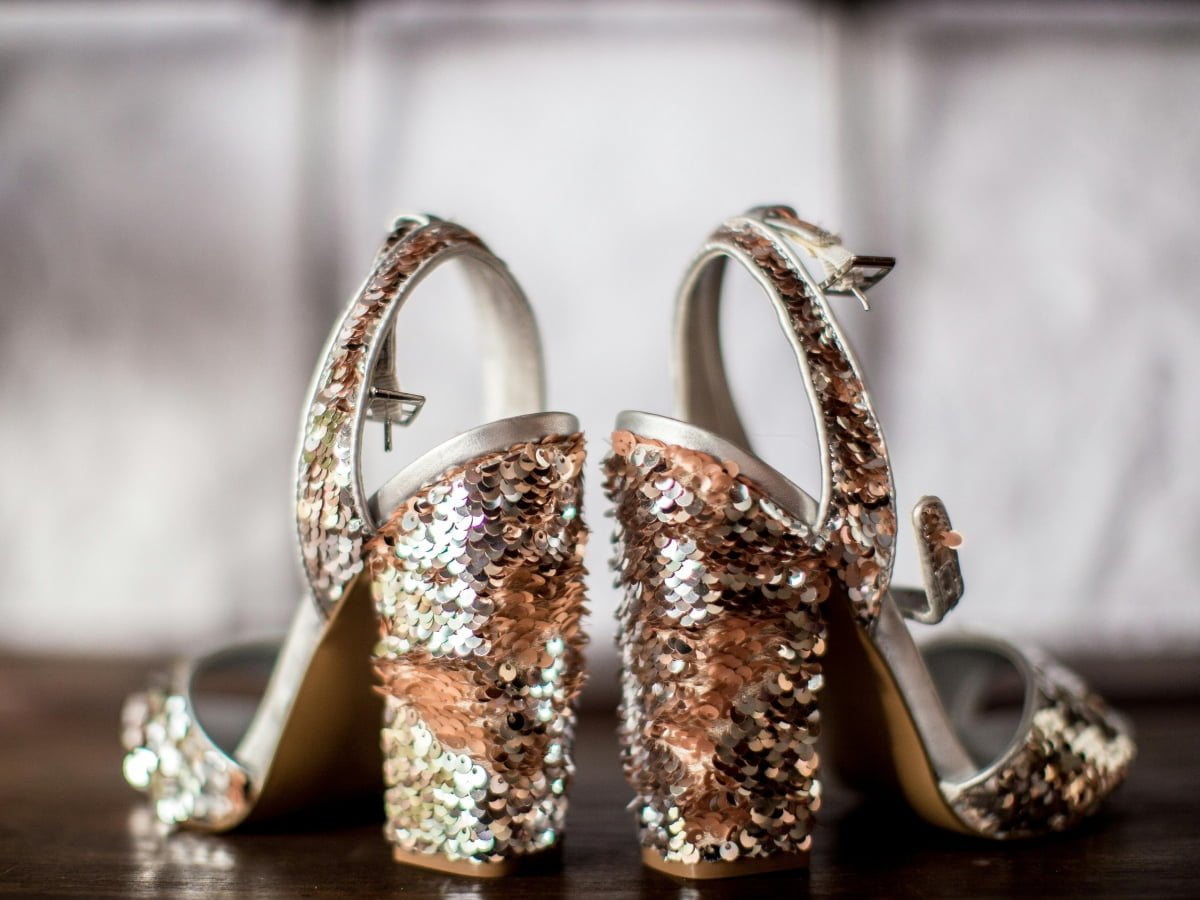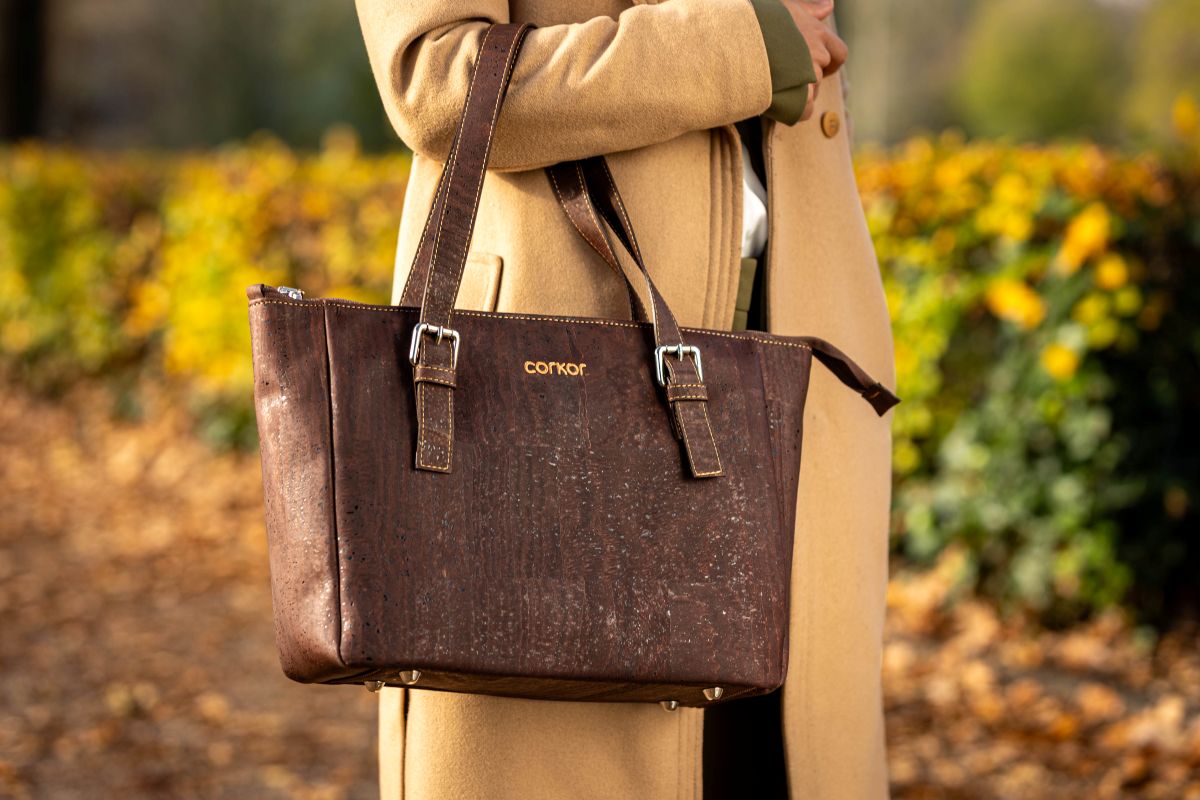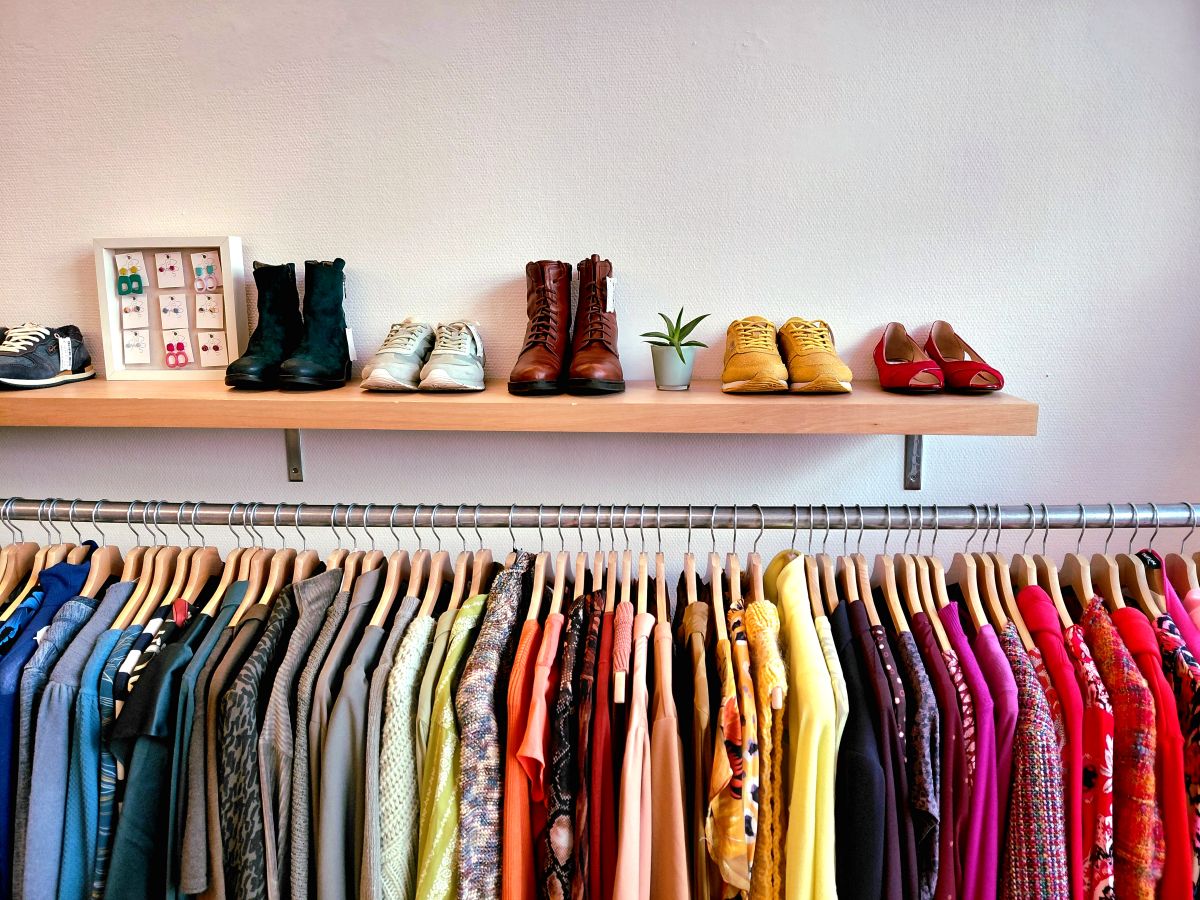A dress, skirt or shirt full of sequins: for many people, the holidays cannot go without such a shiny outfit. And they also pop up regularly during the rest of the year: sequins. They look pretty, but how festive are sequins really? What are they made of and also: who sews them onto your clothes? We delved into the world of sequins and found out for you. And you might have guessed... that party dress is not that festive.
Where do sequins actually come from?
Sequins have been a way to look festive for centuries. It used to be that a garment with sequins (then made of real silver, thin gold or mother-of-pearl!) was only for the rich and famous. These days, a sequin-filled party dress usually doesn't cost the top price. But then again, it's often the case that if it doesn't cost you the main price, something or someone else ‘pays’ the price. Is it the same with sequins? The shine of sequins undoubtedly attracts attention. Spoiler alert: sequins also have a shadow side. Or two. First: the material they are made of. And next: the way they get on your clothes. We take you into the world of sequins.


Such a cute glitter jacket, but what is hidden behind the shiny fabric?
A party dress with glitter
First, the sequins themselves: they are very thin discs, made of polyester (i.e. plastic), often with an extra shiny layer on top to make them as sparkly as possible. If your sequin clothing ends up in a landfill when you no longer want it, it will stay there forever, because plastic doesn't decay. Something that, with our planet in mind, you'd probably rather avoid. UK-based Oxfam has collected more than 600 charity shops (thrift shops whose proceeds go to charity) and calculated that 33 million items (clothes as well as accessories) were bought with sequins in the UK alone in 2019. Of these, 1.7 million items were thrown away after the festive season. Most pieces had been worn only five times on average. Wow, that's a lot of plastic waste (because honestly, that's what a sequin dress is when you throw it away....) that never decays on a clothing landfill. Not exactly festive.
Want to know more about all the clothing materials? We wrote about this in detail earlier!
Tips for your sequin outfit
For a start: don't wash glitter clothes too often. And if you do wash them, turn them inside out first and always on a delicate cycle. Only had your glitter dress on for one night? Then air it out! Short-wearing sequinned clothes can also be freshened up with a spray that you can easily mix yourself: one part alcohol (medicinal, 70%, from your medicine cabinet, or else: vodka, really!) to five parts water, in a spray bottle. Hang out, spray lightly and let dry: fresh! The sequins got dirty here and there anyway? You can also wipe them with a damp cloth with soapy water (after all, it is plastic huh...) and then air the garment.
How is a glitter dress with those festive sequins actually made?
And then to the other side of sequins: how are those tiny glitters sewn onto your clothes? That's quite a fiddly job and sometimes the wildest stories about it circulate, for example that children - because little hands - sew them onto your clothes. Is this really the case? Most fabrics with sequins all over - hello christmas dress! - are machine-made. Besides those clothes with sequins all over there is also a lot on sale with just a sprinkling of sequins or beads here and there. Think of children's shirts with hearts or smileys, which you can also swipe the other way around so that the figure changes colour. Or a blouse or jumper, embellished with a sequin figure on the shoulders. Who sews these decorations on your clothes?
It is not easy to find out who sews the decorations on clothes. Sometimes the clothing brands themselves don't even know. Huh? That sounds crazy. How can that be? Well, the chains in the fashion industry are often long and, unfortunately, far from transparent. For instance, clothing brands order their garments from factories, which in turn outsource the ‘handiwork’, such as sewing on sequins, to subcontractors. Who sometimes subcontract them even further. Are you still there?


In some garments, sequins are sewn on by hand. It could just be that this is done by children.
Is there child labour on your party dress? Just might
The non-profit organisation Goodweave, which works to stop child labour worldwide, reports that conditions in factories where clothes are made are increasingly well monitored and controlled. Nice, but there is still one but... it turns out that the greatest exploitation takes place outside the walls of the factories: with the women who sew decorations of beads and sequins on the fabrics at home, out of sight of supervision. Often, girls help their mothers during busy times when many pieces have to be delivered. Compensation per piece is low, school absenteeism among these ‘home-based’ children high. Do you have something in your house with sequins and now wonder if they were sewn up by children's hands? So unfortunately, it could just be ...
Dull the sequins
Lucy Siegle wrote the book To Die For: Is Fashion Wearing Out the World and she also writes about it in the British newspaper The Guardian (2011) that beads and sequins on clothes often indicate child labour. She states, ‘There are machines that can sew on sequins and beads as if they were handwork, but these machines are very expensive and more suitable for sewing on some more robust stones.’ ‘It is very unlikely,’ says Siegle, that factories invest in these expensive devices, because the fragile thin sequins require skilled hands.’ Siegle estimates that some 30 million people work at sewing up embellishments. How old these artisans are cannot be said with certainty. But chances are, therefore, that young hands have sewn the sequins on your clothes.
And Fairtrade America's Melissa Weinstein also sought it out in 2020: ‘Do you have clothes with sequins or beads on them? Fat chance they were sewn on by children. In countries like India, young children work long hours sewing embellishments on clothes. Because there is often a lack of transparency in the long production chain, garment companies often do not even know who sews the embellishments on their clothes.’
Long story short: a party dress full of shiny sequins is not always as festive as it seems. This is because sequins are still mostly made of plastic, and plastic is made from petroleum, a fossil fuel we want to get rid of. The decorations on party clothes are still often sewn on by women who sometimes (have to) ask their children to help out to meet the demand. And are not always well paid for this. The world may have agreed that child labour should be eliminated from 2025, but unfortunately we are not there yet.
As long as you shine yourself, you don't need those sequins at all
Well, that's not really a shiny story so far. Never wear a glitter dress again, then? Join us for Christmas dinner in your self-knitted jumper? Of course you can, but you don't have to. Do you really want to be sure your party clothes won't harm anyone or anything? Then choose a second-hand glitter outfit - thrift shops often have some really cool sparklers straight from the eighties. Or, which of course you can also do: buy your own sequins made of (partly) recycled material and pimp with this a dress you already have. Borrow or hire a festive sequin outfit, Rentglam specialises entirely in it, for example. Or choose clothes without sequins. Because as long as you shine yourself, you don't really need sequins at all
This is how to borrow or find your party sequin outfit
Want to know where you can borrow a festive outfit? We already looked into that for you. Going for a nice second-hand look? Even then, we are happy to help you get started with our second-hand shopping tips.
More sustainable tips from thegreenlist.nl
- Glitter is smaller than sequins. What is glitter made of, and is there any durable glitter?
- Did you know that plastic also comes off your fleece jumper? Read more about fleece.
- Wondering how sustainable vegan leather is? Read all about plant-based leather in this article.
- Many garments contain elastane. Is elastane even durable?
Sources: Oxfam, Goodweave, The Guardian, Fairtrade America, ILO. Photo credits: main image: Caleb Oquendo (Pexels), woman with glitter jacket: Murat Esibatir (Pexels), glitter/tulle: Karolina Grabowska (Pexels), sequins: Alexander Grey (Unsplash), (glitter) dresses: Alina Komarevska (Pexels).












